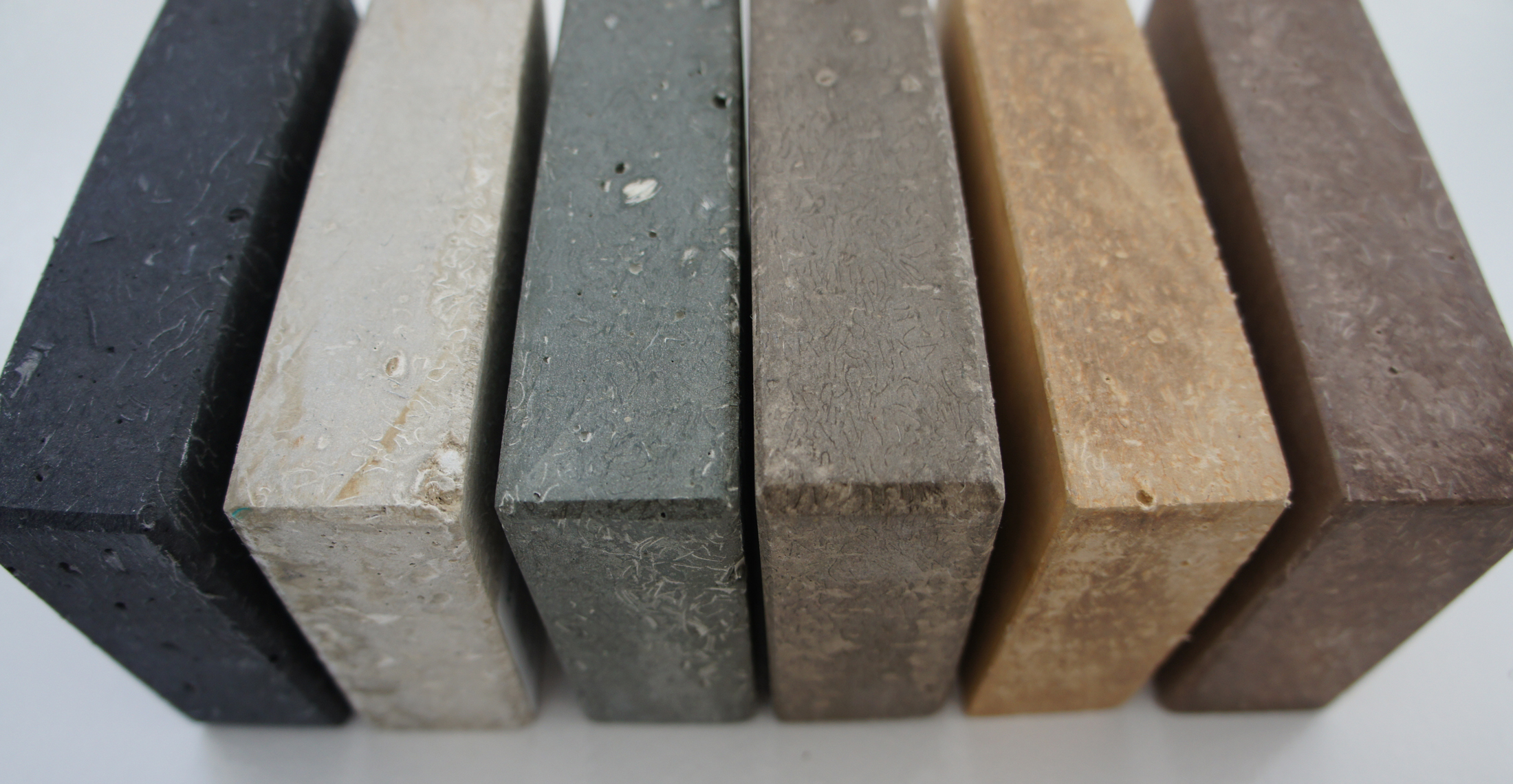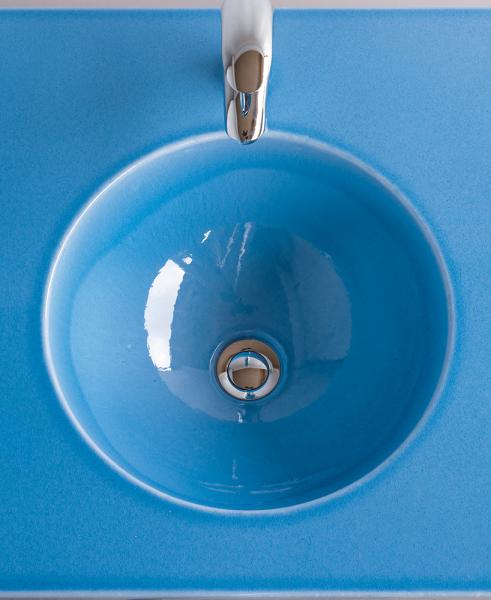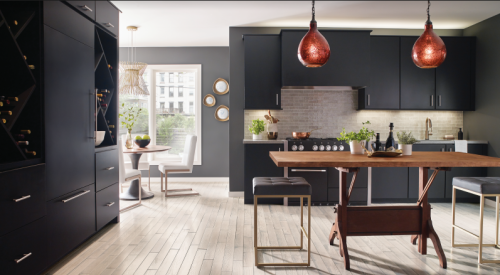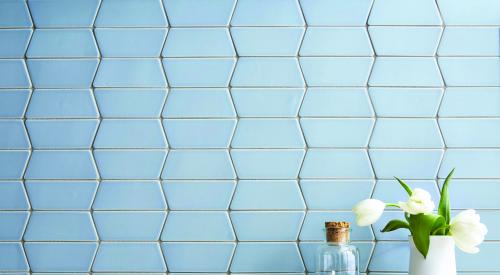Quartz is arguably the most popular kitchen (and bath) countertop surfacing option today, but the industry has other options you should consider.
This was confirmed in the National Kitchen and Bath Association's annual trends survey. The association says quartz is in and granite has been on its way out for a while. Forbes estimates that the granite craze during the housing boom cost the country more than the first Gulf War—$12 billion.
But it’s folly to become fixated on one type of countertop surfacing. In fact, another trend that has permeated kitchen and bath design is the use of multiple complimentary surfaces in one space.
And because there are so many surfacing options, using multiple surfaces is easier than ever. The market today includes marble, soapstone, slate, quartz, concrete, recycled glass/concrete, recycled porcelain/concrete, bamboo, glass, composite resin, paper, aluminum, fiber cement, cork, stainless steel, and on and on.
If money is an issue, laminate is still a good option. Even this old standby has recieved a makeover—there are now tons of colors, textures, and patterns to choose from. It's also easy to find in pre-made tops at big box home supply stores, or can be bought in sheets and glued to a substrate.
And new materials will surely keep coming. Here are 6 products you may not have considered in the past, but should definitely be thinking about for the future.
1. Pyrolave
This glazed lava stone is a made-to-measure surfacing that’s offered in a wide range of finishes from a fine polish through to a rough brush hammer. The manufacturer says it is highly fire, scratch, and stain resistant.
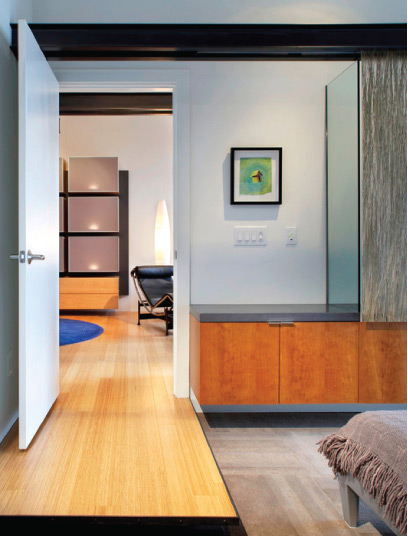
Made from the extremeconcrete line of eco-sensitive materials, the company’s surfacing is available in large formats measuring 60 inches by 108 inches and almost 1¼ inch-thick slabs. It’s made from as much as 85 percent recycled content diverted from waste streams.
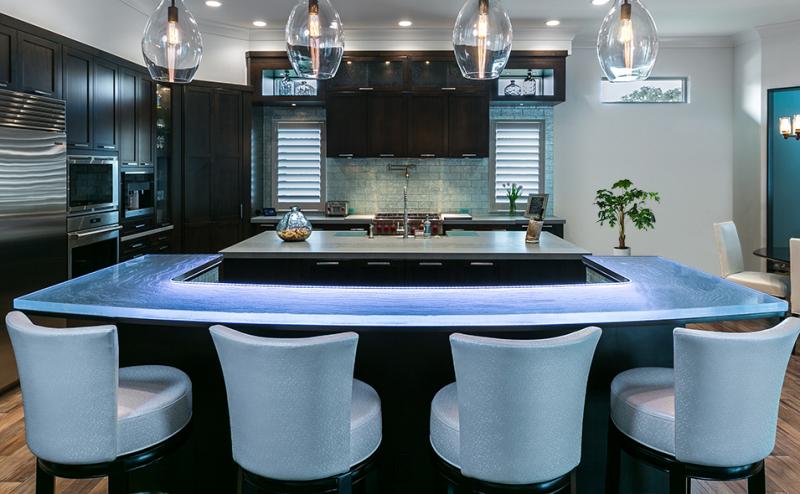
3. Thinkglass, Photo by Jimmy White Photography
Made from 100 percent recyclable glass, this top makes a bold statement in the right kitchen or bath project. It can be ordered in any thickness, edge treatment, molded texture, and color.
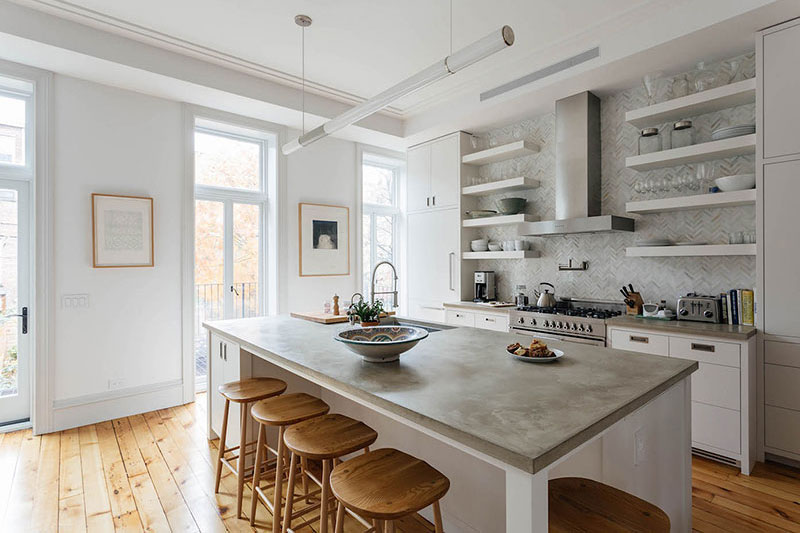
4. OSO Industries, Photo by Nick Glimenakis
Custom concrete is still a viable option for kitchens and baths. The surfacing can be used for vanity tops and islands and may even have integral sinks and drainboards.
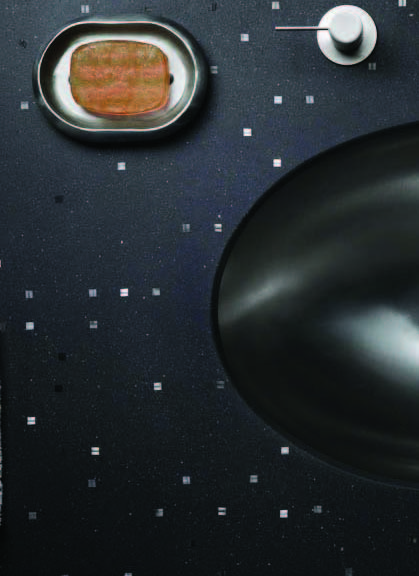
Made in Detroit, this concrete-based material responds to light in strange and interesting ways. The company embeds fiberoptics in the surface that makes them reactive to changes in light intensity and color. It’s available in slabs and tiles.
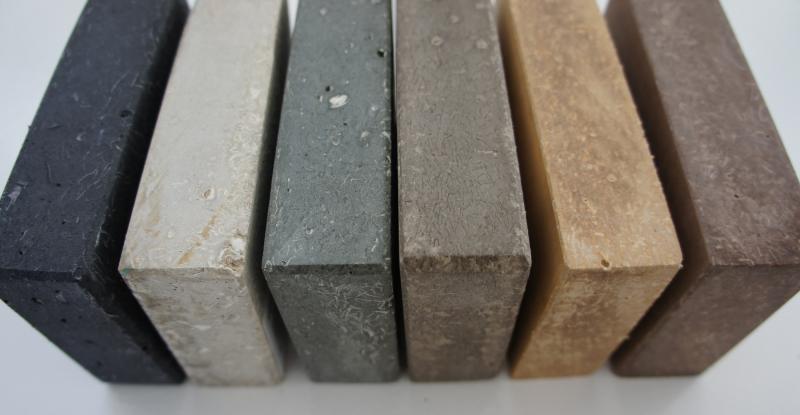
The manufacturer’s product is a fibrous-cement material comprised of recycled paper, recycled glass, and low-carbon cement. It is hand-cast into “slabs” as an alternative to natural or quarried stone and has the appearance of soapstone or limestone.
